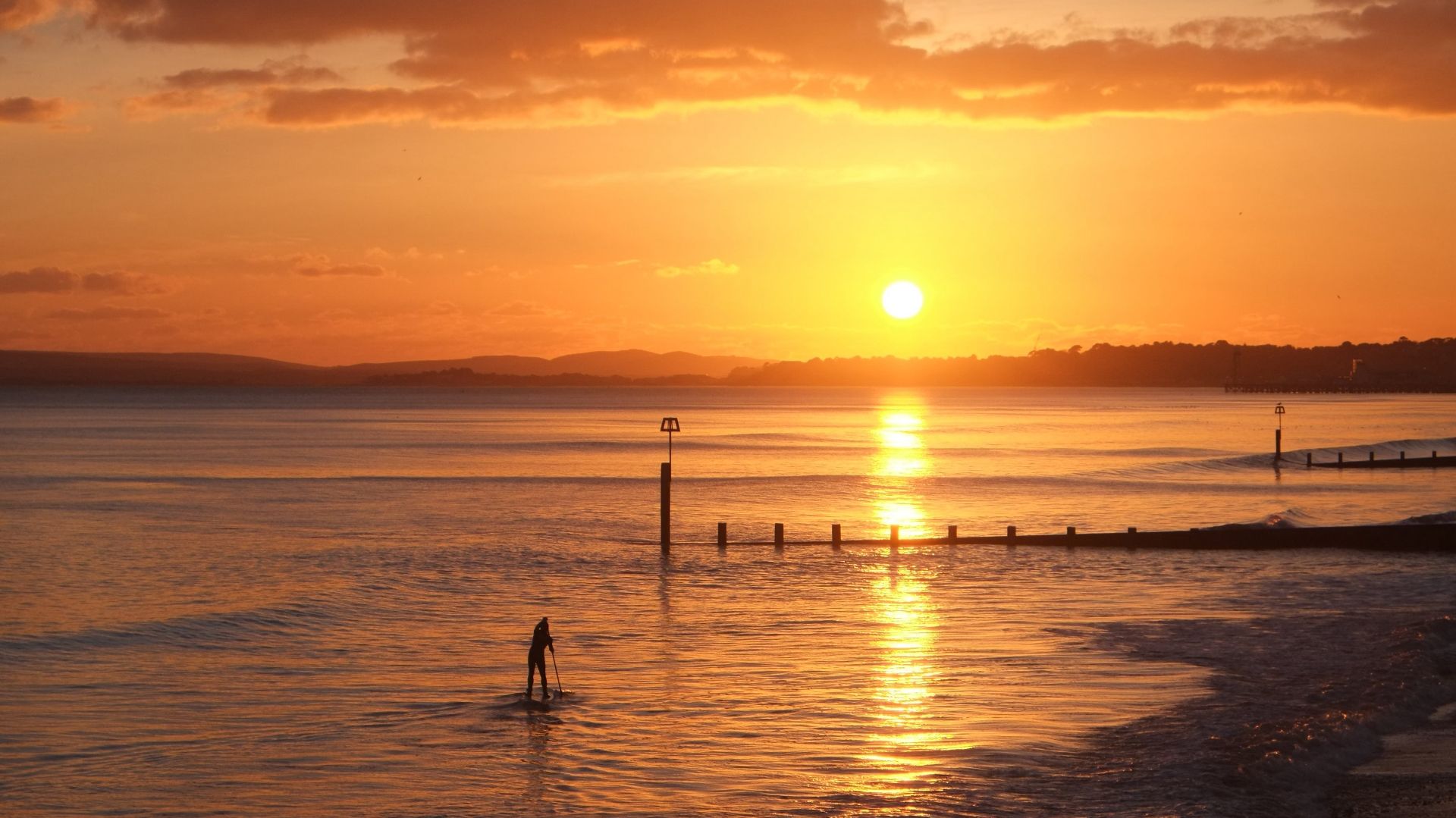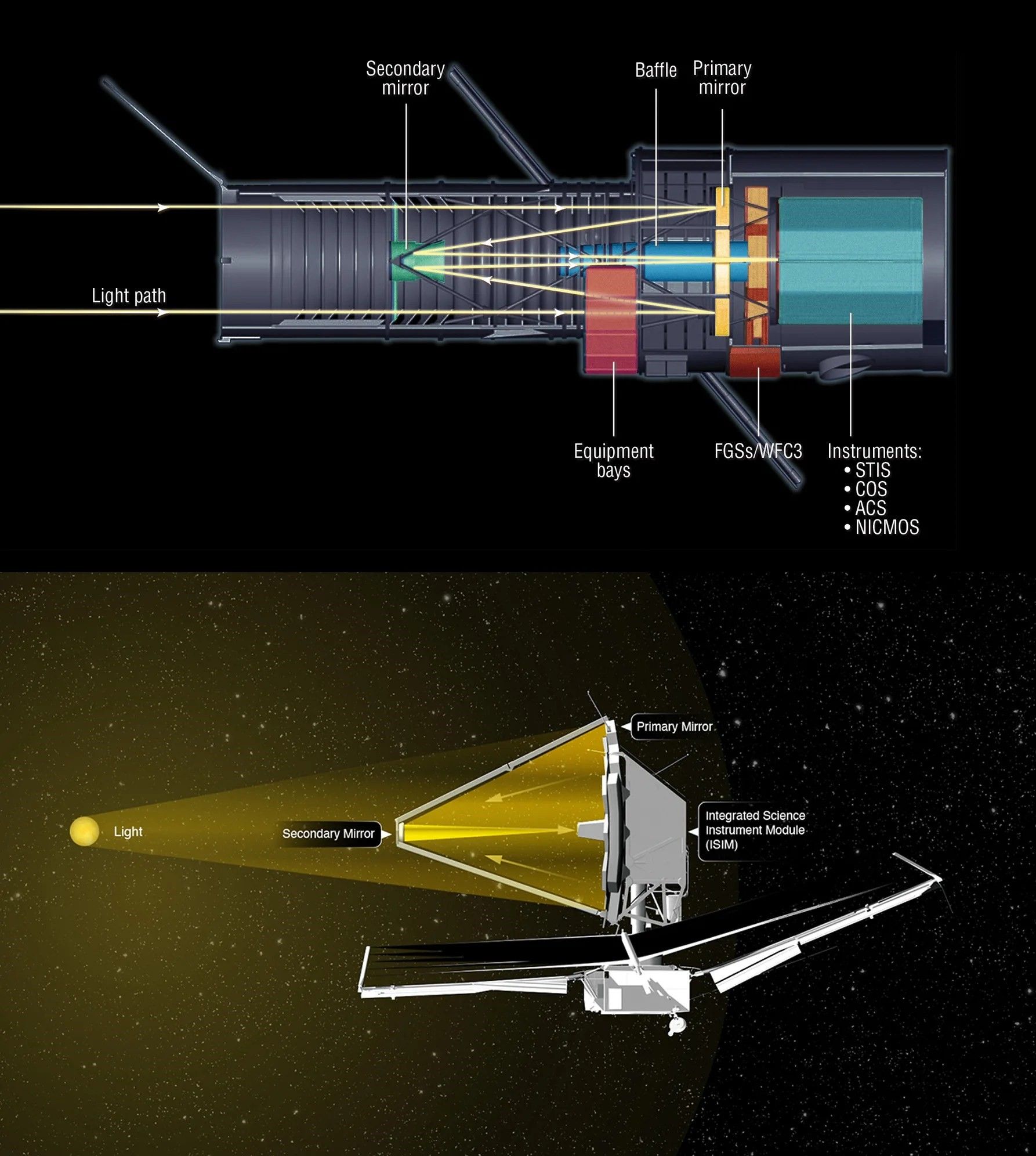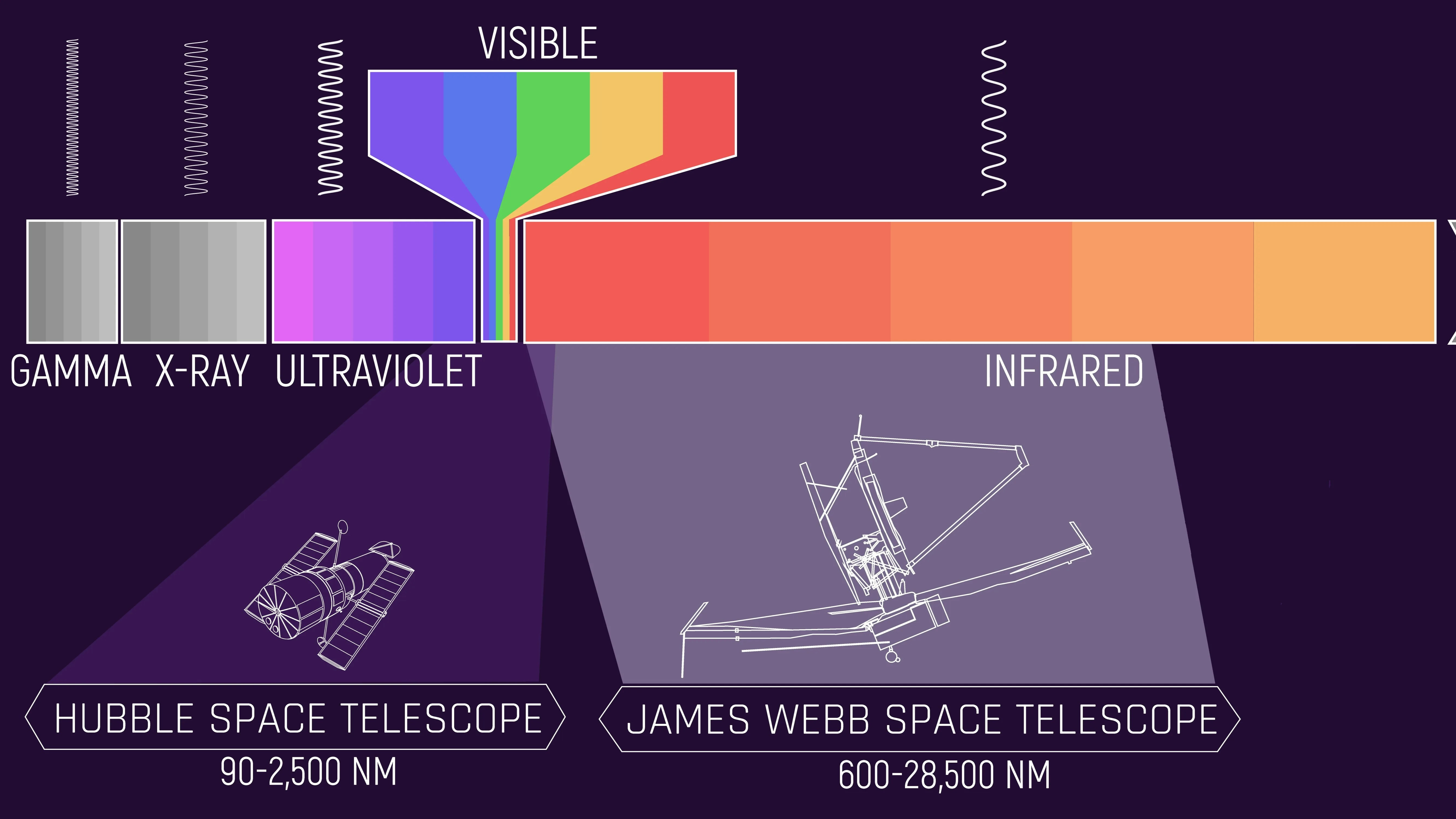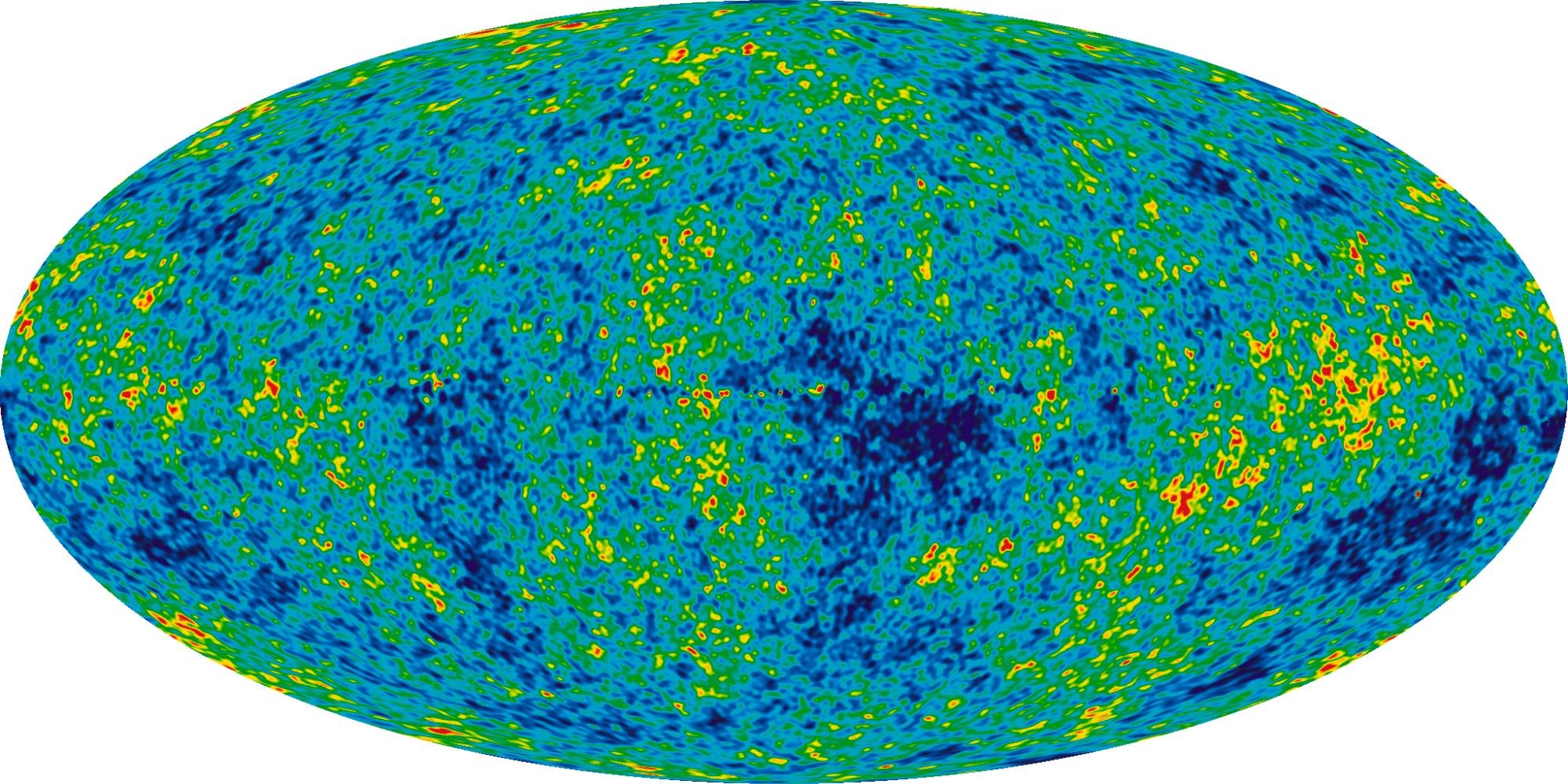Time travel has always been a fantasy humanity loves to think about. What was it like in the distant past? How have things changed, what would it be like if you were there? Time travel is not physically possible, but thanks to the James Webb Space Telescope, we can look back in time as if it were.
Telescopes Allow Visual Time Travel
It may sound like science fiction, but I’m not exaggerating when I say that telescopes allow you to look back in time. The James Webb Space Telescope (JWST), Hubble, and even the backyard telescopes you can buy all allow you to see back into the past to some extent. In fact, the very act of seeing anything is looking back in time, though when it comes to the naked eye, it’s usually not to any degree significant enough to matter.
To understand what I mean, let’s talk about light for a minute.
Everything You See Is from the Past
The way humans see with their eyes is complicated. In the simplest terms, light travels from an object into our eyes, where it is converted into an electrochemical signal. The signal is then sent to the brain and processed, allowing us to see things. Here’s the thing—light takes time to travel. It doesn’t often seem like it here on Earth, but that’s because light travels at an incredibly quick 186,000 miles per hour. Even at extreme distances on Earth, light will travel from one point to the next very quickly. In your day-to-day life, the speed of life usually feels almost instantaneous.
It’s not instant, however. Nearly instant, but not instant. Because it takes some time for light to travel, even if it’s down to nanoseconds, everything you see is technically in the past, not as it is right this moment. It’s insignificant here on Earth but becomes much more important to take into consideration as the distance in question grows larger. Naturally, this means the speed of light is much more noticeable in space.
For example, it takes light from the Sun about eight minutes to reach Earth. This means you are always seeing the Sun as it existed eight minutes ago, not as it is right now. If our star exploded right at this moment, you would not be able to see it for the next eight minutes, because that’s how long it would take the light from that moment to reach your eyes and give you a new visual. It’s kind of scary, honestly.
At any rate, the speed of light dictates what we are seeing when we observe space. The farther away an object is, the longer it takes for light from that object to reach us, and that means we are seeing those objects as they were in the past, not as they are right now. Alpha Centauri is four light years away, so we are always seeing it as it was four years ago. The North Star is 446 light years away, so for all we know, it could have gone supernova three hundred years ago, and we won’t even know it until 146 years from now.
This principle is why incredibly powerful telescopes like the JWST enable us to see into the distant past. So far, even, that we may be able to see millions of years farther into the past than Hubble was capable of.
The James Webb Space Telescope
For a long time, Hubble was the most powerful optical telescope in humanity’s arsenal. Because it was massive and able to look into space without obstruction from Earth’s atmosphere, Hubble was able to see incredibly far into space, observing celestial objects billions of light years away, such as galaxies and nebulae, and providing critical evidence supporting the existence of black holes. The JWST is Hubble’s companion and will allow scientists to see even further back thanks to a few key features.
First, JWST is much bigger than Hubble. Put simply, both Hubble and the JWST are reflecting telescopes that use mirrors to collect and bend light into their observation instruments. The JWST has a much bigger primary mirror than Hubble—21.3 feet compared to just 7.9 feet. That’s more than six times the light collecting area when working with the secondary and tertiary mirrors.
Here’s why this allows us to see further into space than Hubble does. As you may know, light is part of something called the electromagnetic spectrum, and it travels in a wave. Since the universe is expanding, the wave gets stretched out as it travels through space. As objects move away from us, blue light turns to green, green light turns to red, and red light shifts into the infrared.
Under normal circumstances, human eyes cannot see infrared light, but infrared images can be captured by certain instruments. The light of immensely distant objects is in the infrared spectrum by the time it reaches Earth, and it’s incredibly faint. Hubble can detect some of these, but not very many. The JWST, on the other hand, can detect a much broader range of infrared light than Hubble can, thanks to its bigger, gold-plated mirror and special instruments.
This means the JWST will be able to pick up light that is too faint for Hubble to even identify. In fact, the JWST can see objects up to a hundred times fainter than the faintest objects Hubble can see. The giant mirror allows the JWST to see those objects at a similar resolution to Hubble, since resolution—the level of discernible detail—is inversely proportional to mirror size and proportional to the wavelength of the observed light.
Furthermore, infrared light cuts through dust and other obfuscating material that may be between the JWST and an object it’s trying to observe, meaning it’ll be able to get clearer images of some objects than Hubble can. But the resolution of the image the JWST can see is actually the same as Hubble overall.
Is the James Webb Space Telescope Replacing Hubble?
So far, it may seem like the JWST is just superior to Hubble in every way, like a newer model that should replace the old one. This is not the case. Hubble is old, but it’s not being replaced by the JWST. That’s because Hubble actually sees some things that the JWST doesn’t see. JWST sees primarily infrared light. However, it’s not actually seeing much visible or ultraviolet light—at least, not as much as Hubble.
This means that the two telescopes will best serve as a pair, with their combined specialties allowing us to see celestial objects across a broad spectrum. Admittedly, there will be some objects that are so distant that Hubble won’t be able to detect them at all, and the JWST will have to observe those objects on its own. Even so, the JWST is not replacing Hubble, it’s merely providing a new way to observe the cosmos.
Witnessing the Birth of the Universe
The JWST is extremely powerful, and some people have been led to believe that it may be able to see the origin of the universe, specifically, the Big Bang. While this is true, in a way, it’s also a bit misleading. Here’s the thing—you can’t see the Big Bang.
It’s a common misconception that the Big Bang was some sort of explosion, with an epicenter that the known universe is rushing away from, but this isn’t true at all. The Big Bang happened everywhere all at once, at a particular time, but not in a specific physical place. The Big Bang refers to the beginning of the universe’s expansion, not the actual creation of matter itself. It’s all pretty complicated, but the point is that the JWST cannot see the Big Bang.
What it can see will be the first objects that formed once the universe started to cool down after the Big Bang. The JWST is designed to see how the very first stars and galaxies were formed in the universe. The universe existed before any stars or galaxies formed, for millions of years even, but that has already been “seen” by very different tools, such as Cosmic Background Explorer (COBE), the Wilkinson Microwave Anisotropy Probe (WMAP), and Planck.
So really, the JWST isn’t intended to see the actual “birth” of the universe. It’s designed to see the creation of the earliest objects in the universe, which is quite a big difference. We’ve witnessed the time before those progenitor stars and galaxies and the time after them, but we haven’t actually seen the time period in which they formed.
As for why scientists want to see that, it’s simple. They’re curious! The chemical elements required for life were first produced by the very first generation of stars. Humanity only exists because those stars formed, and scientists have no idea how those stars formed exactly. Some people just really want to know how we all got here, the moment that allowed our world and our species to even exist. Curiosity is reason enough for science!

The Largest Telescope in the World: A Giant Leap for Space Exploration
The world’s largest telescope is almost as big as your house—and it’s unlocking the universe’s biggest mysteries.
Ultimately, the JWST is “just” a really, really big telescope. The biggest humanity has ever made, in fact. With it, scientists will be able to “see” objects more distant than Hubble was ever capable of detecting, which means humanity will be able to study celestial objects in the distant past of the universe. With this power, we may just be able to see how the very first stars and galaxies formed in the universe, and by extension, how Earth and humanity came to be.











Leave a Comment
Your email address will not be published. Required fields are marked *